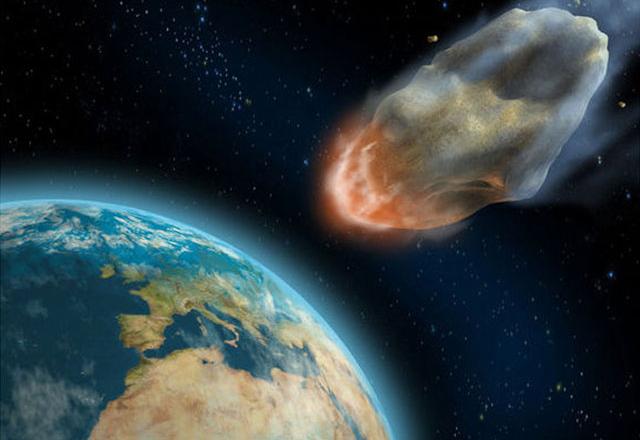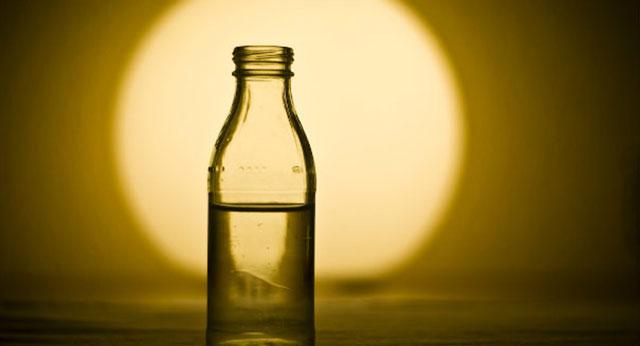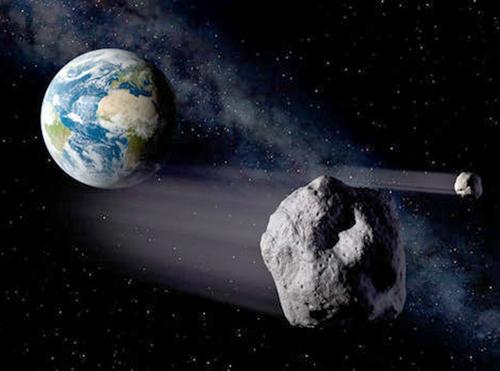You are here
Did a massive asteroid impact spark life on Earth?
Dec 09,2014 - Last updated at Dec 09,2014

By Geoffrey Mohan
Los Angeles Times (TNS)
Researchers have recreated a split-second impact of a meteor with primordial Earth, and shown how the 3.5-megatonne collision might have reorganised common molecules into some of the early building blocks that led to all life.
The feigned cataclysm took place in a lab in Prague using a 150-metre laser system to create a high-density plasma, with temperatures soaring to about 4,230oC, and see its effects on a pool of formamide.
That chemical, commonly used in making sulfa drugs, has been identified in the tail of comets and around young stars, and some researchers believe it could have been present on the early Earth nearly 4 billion years ago.
In the experiment, the formamide broke down and recombined, forming precursors to the four basic building blocks of RNA and DNA, the cornerstones of life, according to the study published online Monday in the journal Proceedings of the National Academy of Sciences.
“If you want to solve a problem of DNA and RNA, first you have to explain where the bases are coming from,” said chemist Svatopluk Civis of the Czech Academy of Sciences, lead investigator of the study. “What we wanted to simulate was the impact of an extraterrestrial body into the early stage of the atmosphere.”
The impact mimics those that likely occurred during the early formation of the solar system, when the planets as we know them came together through massive collisions of debris surrounding the sun. A common model of this “late heavy bombardment” period suggests early Earth was hit with a billion tonnes of material per year, each typically speeding through its thin atmosphere at more than 3,200 kilometres per hour, regularly creating impact craters several hundred feet in diameter.
It would have been both a disastrous and fortuitous time for early “biological” molecules, which could be annihilated and reformed many times over, according to researchers.
Since the earliest laboratory experiments, more than 60 years ago, showed that electrical energy could transform simple organic molecules into amino acids, researchers have been finding novel and sophisticated ways to simulate or model the so-called spark of life. They have focused on mimicking the energy provided by lightning, hydrothermal energy, ultraviolet radiation, nuclear decay, and collision with an astronomical object, such as an asteroid or comet.
Civis is decidedly in the latter school. But there has been much controversy over the years about what molecules are likely to have been present in primordial Earth’s atmosphere and on its turbulent surface. One such compound is formamide, which also happens to have the four elements essential to life — carbon, hydrogen, oxygen and nitrogen.
“It’s well known that formamide exists in space, and it was found in tails of a comet,” said Civis.
While that may be so, “there is no known geochemically feasible process for the generation of pure formamide in a plausible primitive Earth environment”, said University of California, San Diego/Scripps Institution of Oceanography chemist Jeffrey Bada.
At best, said Bada, formamide is an inert, transient byproduct of a simpler reaction. Although the study’s chemistry is “interesting from a straight chemical synthesis point of view,” Bada said, “the relevance of this to the prebiotic chemistry of the early Earth is questionable.”
Civis and his co-authors maintain that formamide could have persisted on early Earth, or been carried by a comet. Regardless, Civis believes their experiment would work with other molecules.
“Maybe you can do additional experiments, for example, with formaldehyde,” he said. “Formaldehyde was the first molecule found in space.”
At least, Civis said, the laser experiment demonstrates that a high-energy impact could convert inert organic molecules into “informational” molecules that form the code of living things.
“It looks like it is possible,” he said.
Related Articles
PARIS — A newly discovered comet could be visible to the naked eye as it shoots past Earth and the Sun in the coming weeks for the first tim
Some of the water molecules in your drinking glass were created more than 4.5 billion years ago, according to new research.
Icy comets may have a reputation for being the inner solar system’s ancient water delivery system, but a new study finds that most of the wa

















